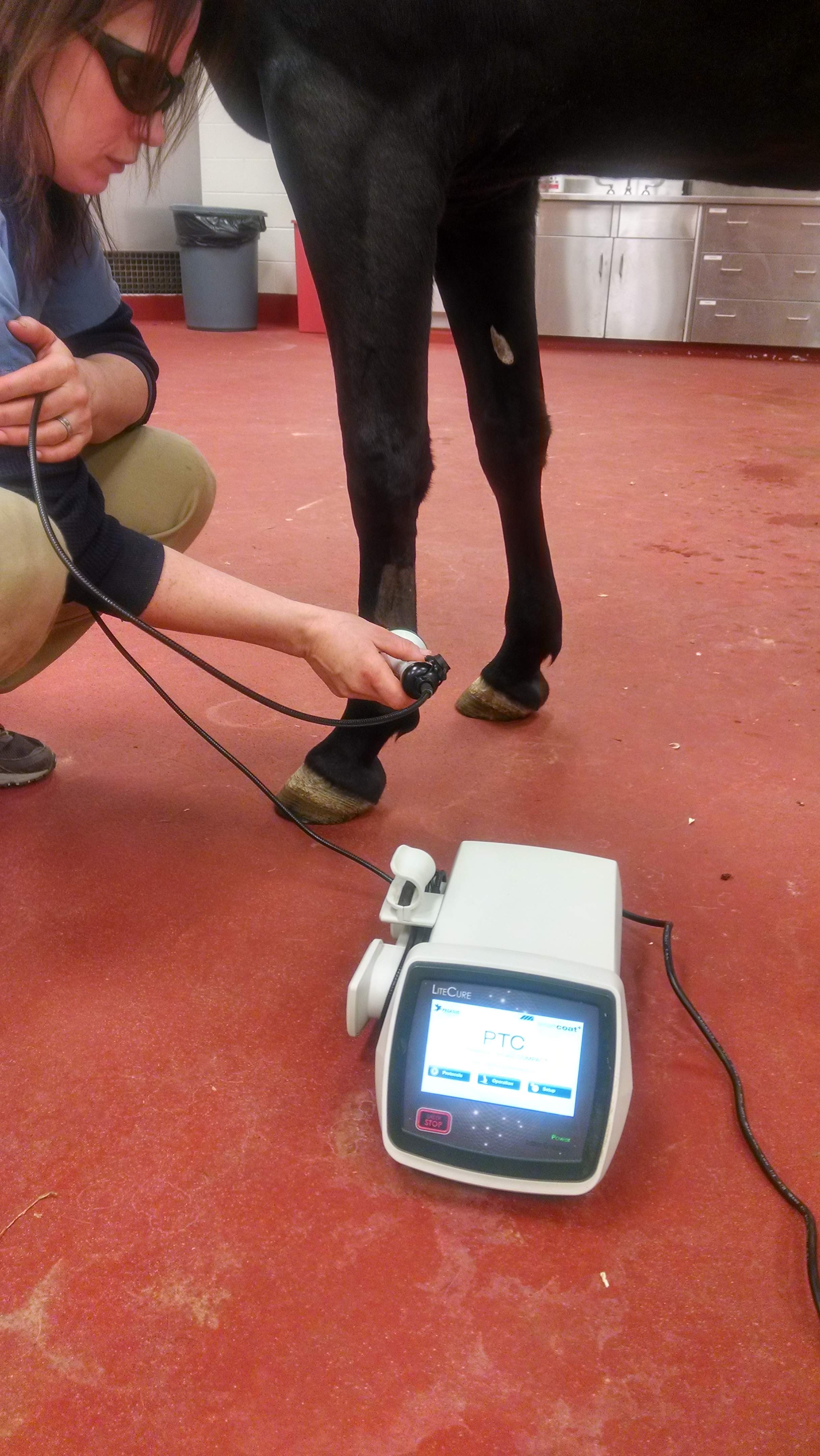Equine Therapy: How It Helps Build Self-confidence and Psychological Stamina
Equine Therapy: How It Helps Build Self-confidence and Psychological Stamina
Blog Article
Evaluating the Performance of Laser Therapy in Equine Treatment for Injury Rehabilitation
The evaluation of laser treatment's efficiency in equine injury rehabilitation hinges on several aspects, including healing time, discomfort reduction, and cells regeneration. Vets regularly observe superior outcomes with laser treatment compared to standard techniques, positioning it as a critical component in equine treatment.
Recognizing Laser Treatment
Laser treatment has actually ended up being a pivotal device in veterinary medication, especially in the therapy of equine conditions. Understood for its non-invasive nature and efficiency, laser therapy entails the application of details wavelengths of light to promote cells repair work and decrease swelling. This therapeutic modality is progressively preferred for its capability to speed up the recovery process in horses dealing with a variety of musculoskeletal injuries and chronic problems.
The key device behind laser therapy is its ability to improve cellular functions. Additionally, laser therapy promotes vasodilation, improving blood flow and oxygen shipment to damaged tissues, therefore speeding up recuperation.
In equine medicine, laser therapy is particularly helpful for problems such as tendonitis, osteoarthritis, and injury recovery. The strategy is lauded for its pain-relieving properties, permitting horses to restore flexibility and function more swiftly. Veterinarians also value its very little negative effects contrasted to various other treatment modalities, making it a trusted and risk-free alternative for equine treatment.

Just How Laser Treatment Works

Upon absorption, these photons cause a series of biochemical modifications, boosting mitochondrial feature and causing raised adenosine triphosphate (ATP) manufacturing. This surge in ATP accelerates cellular metabolic process, advertising tissue repair service and regeneration. Additionally, laser treatment regulates inflammatory responses by affecting cytokine degrees and decreasing oxidative stress and anxiety, thereby easing pain and swelling.
Another significant aspect of laser treatment is its function in enhancing microcirculation. The treatment advertises vasodilation, boosting blood flow and oxygen delivery to broken tissues (Equine Therapy). This assists in the removal of cellular particles and supports the expansion of fibroblasts and collagen synthesis, critical for injury healing
Professional Proof
The effectiveness of laser treatment in equine treatment has actually been confirmed through various professional research studies, showcasing its healing potential throughout an array of conditions. A research performed by Turner et al. (2012) demonstrated that equines treated with low-level laser treatment (LLLT) for tendon injuries displayed increased recovery compared to those getting conventional treatments.
In a similar way, study by Johnson and colleagues (2015) concentrated on equine muscular tissue injuries, disclosing that laser treatment significantly sped up muscle mass fiber regeneration and minimized muscular tissue tightness. These findings were substantiated by histological analyses showing better muscle tissue company. Clinical evaluations have shown that laser treatment can reduce persistent conditions such as osteoarthritis. A research study by Smith et al. (2018) reported that horses with osteoarthritic joints experienced significant pain alleviation and enhanced variety of motion following a routine of laser therapy sessions.
Veterinarian Insights

Veterinarians additionally appreciate the versatility of laser therapy. She aims out that laser treatment can be tailored to the specific requirements of each horse, ensuring ideal end results.
Furthermore, vets value the capability to incorporate laser therapy with other therapy methods. This multimodal technique can boost overall therapy effectiveness, supplying a comprehensive service for equine rehab. Such endorsements from skilled professionals underscore the expanding have a peek here acceptance and application of laser treatment in equine medicine.
Practical Considerations
A key aspect of applying laser treatment in equine treatment involves comprehending the sensible factors to consider that guarantee its efficacy and security. Primarily, it is important to choose the suitable laser device, as various types differ in wavelength, power, and infiltration depth. Equine Therapy. Veterinarians need to be well-versed in these parameters to customize therapy protocols successfully per injury kind
Furthermore, the regularity and period of laser treatment sessions require mindful preparation to maximize restorative advantages while decreasing any potential negative results. Consistent monitoring of the horse's response to therapy can assist needed modifications in the therapy regimen. Developing a secure and regulated atmosphere throughout therapies is additionally necessary to protect against unexpected direct exposure to laser emissions, which can harm both the equine and the handler.
Educating and accreditation of personnel administering laser therapy are critical to guarantee proper strategy and to support safety and security requirements. In addition, keeping precise documents of each session, including laser settings and observed outcomes, is essential for assessing the total performance of the treatment and for making data-driven choices.
Verdict
Laser therapy has actually arised as a reliable technique in equine injury recovery, offering significant benefits in recuperation time, pain relief, and cells healing. For ideal outcomes, continual monitoring and personalized therapy methods remain vital in leveraging the Our site complete potential of laser therapy in equine treatment.
Report this page